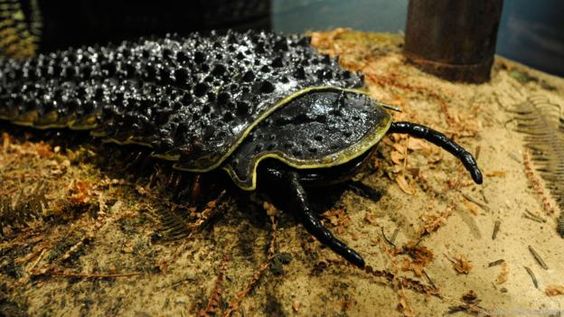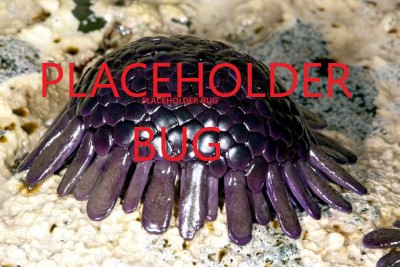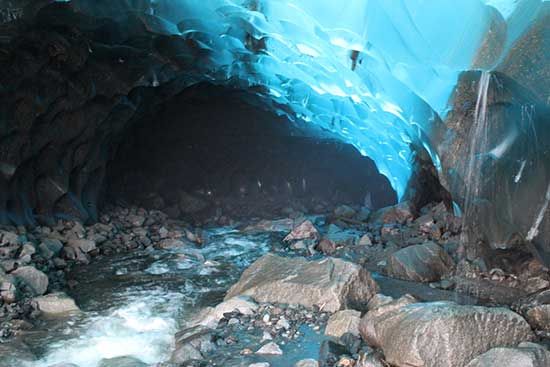Pahü Worm
Pahü Worm (or simply Pahü) are furry, centipede-like creatures that make their home in arctic tundras and frozen caverns. With their coat of fur and thick insulating blubber, they burrow into glaciers to make their nests among ice and snow. In the Outer Shell, they live only in places like the Phrōjhana Region, where ice and stone are equal parts of the caverns.
Description
Behavior
Pahü are not aggressive if left alone and at distance. Only if their nest is invaded or threatened will they attack and give chase for a long period of time.Pahü dig their nests out of ice and create large warrens for their extended families. It is where they sleep and seek shelter from Blight storms or blizzards, as well as house their eggs. If an area has been exhausted of food or is threatened, the Pahü will abandon them to make new nests elsewhere. Such abandoned nests are often used by other beasts, once whatever danger that drove the Pahü away has passed. When threatened, the Pahü latch on and coil around their attacker to deliver repeated bites. When the poison has incapacitated the unfortunate soul, the Pahü will scuttle away, unless disturbed in their lair. In such cases, the entire family of Pahü will swarm and continue to bite until the attacker is dead. The worm can swipe with its tail, though it tends to be more of a wild flail to keep predators from approaching it from behind.
Life-Cycle
Pahü in the World
The Phtangi Nomads have perfected the art of hunting just enough of the Pahü to keep them from exhausting an area of the red algae and moving on, but not so many that the creature feels threatened enough to move their nests. It is a balance easily disrupted.There have been attempts to domesticate the Pahü, with mixed results. A few ranches in Phrōjhana keep pens of the Pahü, but they are wild animals in captivity rather than cattle content to wait for slaughter. It is a profitable enough venture that the loss of a ranch-hand or the occasional envenomation has not deterred future attempts.
The Pahü Worms are native to two major regions of Araea: The Surface and the Outer Shell. The Surface The Surface is a dangerous, irradiated land of frozen tundras and blasted deserts, where monsters fight fiercely for survival. The Pahü Worms make their home in the vast glacial icescapes or in arctic lands such as Hēla Read More About The Surface The Outer Shell The Outer Shell are the tunnels and caves nearest the surface, in some cases separated only by mere feet of stone. The grottoes are are smaller and support less life than those deeper down in Araea, but offer sanctuary when storms of blight and lightning ravage the Surface where the Pahü live. Read More About The Outer Shell
Pahü Poison
It felt like my veins were on fire just moments after it bit me. There was so much venom that some of it just pushed itself out of the wound, but what I got was enough. I've been bit by a Suryō Spider before and that was child's play in comparison.The Pahü's venom is a power poison inflicts crippling pain as flesh dies and veins atrophy. The area around the bite will almost certainly turn necrotic without treatment and most who taste the venom carry the scars for the rest of their lives. The Pahü's venom will not usually kill its victim, but they might wish it would while it still courses through their veins.
Pahümelette
Pahü eggs are a popular dish to those who can get them. Once cleaned of their slime coat and cooked by roasting or boiling, the eggs have a rich and pungent flavor. The flesh of the egg is dense and the meal hearty, with the preferred method of serving being to cut the boiled eggs into strips and than season them with salt. As the Pahü are almost always in their lair, acquiring the eggs is dangerous. More than a few hunters have instead tested the theory that the Pahü do not eat human flesh.Pahü are not immune to the ravages of Blight, but they are much more resistant than humanity. Some variants of the creature make lairs at the edge of the Shrouded Lands as a way to hide from predators. With more red algae or similar flora to sustain them, these Pahü grow larger and vicious.





This is like Udan's evil cousin. Why do you torment us so?
Check out my summercamp by going here and checking out any of my gold-star articles!
I had never thought of it like that before and I kind of love it. :D
Creator of Araea, Megacorpolis, and many others.